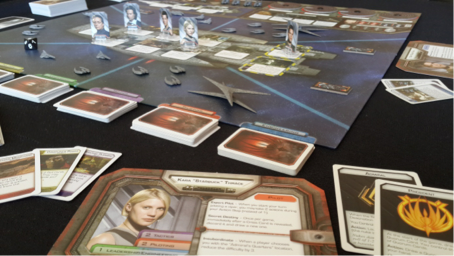(Don’t) Look Back: Our Nostalgia for Horror and Slasher Films
Editors: Karrȧ Shimabukuro and Wickham Clayton
On first consideration it may not seem like “nostalgia” and horror and slasher films have any clear connections. Usually nostalgia is applied to events and experiences that have a pleasant connotation, even if these pleasant feelings are a result of a rose-tinted view of the past. While nostalgia can refer to personal feelings as well as larger communal or cultural memory and pleasure, there is also an implied action to it- that someone is seeking to reclaim, or revisit a specific time period or place for an explicit reason. Applying this understanding to remakes, revisions, reimaginings helps us understand what the purpose of these reworked creations are, the work they’re doing, and how they build on and expand on an already understood and accepted set of narratives, tropes, characters, and beliefs.
Since the national and global trauma of 9/11 we have seen dozens of remakes, reboots, revisions, and reimaginings of horror and slasher films from the 1970s and 80s. Each work seeks to capture some element of the original- the simple understanding of good and evil, the audience reaction to scares, an aesthetic homage, the commercial popularity. If we shift our perspective to view these films through the lens of nostalgia, we can see that many of these narratives are grounded in trauma, the performance of it, the aftermath, how people survive and later work through it. Whether it is a movie, mini-series, television show, or video game, these remakes can be organized according to several subtopics that perform different work within the media and reflect different fears, anxieties, and desires of a specific historical and cultural moment, although the argument could be made that some texts belong in a variety of categories, and there is noticeable overlap.
Movies such as Carrie (2013) , Prom Night (2008), The Fog (2005), Piranha (2010), and Piranha 3DD (2012), My Bloody Valentine 3D (2009), Friday the 13th (2009), Predators (2010), The Predator (2018), and Fright Night (2011) as well as the television show Ash vs. Evil Dead (2015-2018) all seek to recapture the pleasant memories either of the creator upon their first exposure, or the often initial teenage experience of the audience. It’s also worth noting remakes that seek to capture this feeling and audience reception but fail as is the case with Pet Semetary (2019) and Prometheus (2012) and Alien: Covenant (2017) or remakes of films that were considered cult classics, or lacked the recognition of many of these titles such as Sorority Row (2009). While many of these movies have trauma as their inciting incident, or backstory, films such as The Hills Have Eyes (2006), Texas Chainsaw Massacre (2003), Amityville Horror (2005), and The Thing (2011), explicitly deal with trauma in their narratives. A large number of remakes seek to correct or revise perceived errors, erasures, or missteps in the original source material. Certainly this is true in The Shining (1997 mini-series), The Stand (1994 and in production 2020), The Last House on the Left (2009), Straw Dogs (2011), Suspiria (2018), and Nightmare on Elm Street (2010). Some texts like The Haunting of Hill House (2018-present) begin as a revisionbut ultimately go deeper, seeking to uncover a narrative within the source material. With the explosion of streaming services, alternative storytelling, and multimedia narratives, we’re seeing more and more adaptations that use horror or slasher narratives as their foundation but create their own stories from them. Bates Motel (2013-2017), The Exorcist (2016-2018), Doctor Sleep (2019), Castle Rock (2018-present), The Conjuring (2013), and Hannibal (2013-2015) all fit this category.
This edited collection would seek contributions that view these and other texts through this lens of nostalgia, how these remakes, reboots, revisions, and reimagings are the vehicle for the anxieties and concerns of a particular moment, and what work they are doing. We’re particularly interested in contributions that analyze texts that interact with the source material in new and interesting ways, deconstruct tropes and styles innate to these genres, as well as the application of adaptation and fan studies to these works. The editors are accepting proposals for chapters focusing on nostalgia in horror after 9/11. Topics for contributions, focused through a lens of nostalgia, can address, but are not limited to:
Case studies that relate to nostalgia as:
- Trauma
- Revision/Rewriting
- Recapturing past pleasure
- Using past forms to fill new concerns
Theoretical approaches to understanding horror and trauma
Understanding socio-political and economic cultural contexts
Pleasures of horror nostalgia post- 9/11
Slashers, subtexts, and tonal intensification
Paranormal embodiments of contemporary fears
Proposals should be submitted by 31 March 2020 to Karrá Shimabukuro khkshimabukuro@gmail.com and Wickham Clayton wickscripts@hotmail.com. First drafts due 31 December 2020. We welcome questions and expressions of interest at any stage.
 |
| Dawn of the Dead (2004: dir. Zack Snyder) Strike Entertainment / New Amsterdam Entertainment / Metropolitan Filmexport / Toho-Towa |

